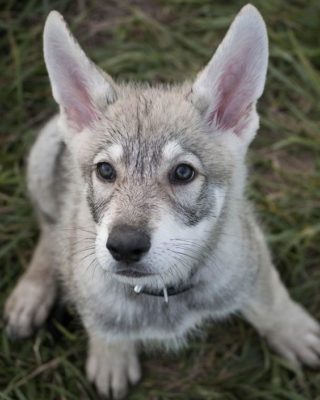Saarloos Wolfdog

Just because a dog is bred from a wolf does not mean that it is an aggressive animal. But the fact that Saarloos Wolfdog has character traits common to the wolf is actual. First and foremost, it has a penchant for living in a pack. Out of this comes a distrust of strangers. The dog of this breed has an unwillingness to obey anyone. A strong desire for will takes its toll.
Table of Contents
Breed Information
| Another Name | Saarloos Wolfhond |
| Origin | Netherlands |
| Height | Males 60-75 cm Females 55-65 cm |
| Weight | Males 35-40 kg Females 32-38 kg |
| Fur | Medium, dense |
| Color | Identical to the wolf’s |
| Lifespan | 12-14 years |
| FCI Classification | Sheepdogs and Cattledogs (except Swiss Cattledogs) |
| Group | Service dog |
| Price | From $800 |
Breed Photos
Origin History
In the early twentieth century, the Dutch cynologist Lander Saarlos began to crossbreed wolves and German shepherds. For the first selection, only the most significant and most challenging dogs and wolfdogs were chosen. Lander’s mission was to combine the friendly character of the dog with the strength of the wolf. The breed first appeared in 1962. From this litter, the best puppies were also selected.
At the age of eight months, it is already possible to determine the animal’s character and its general characteristics. When this age was reached, breeders began to select the best dogs for other breeding features. After six years of experiments related to the selection of dogs, the breed was finally officially recognized. The breeders concluded that the dog of this breed was more closely related to the wolf than others.
Appearance
The dog is easily confused with a wolf. It is a large breed with a strong body. Although the animal has a robust and strong body, the gait is light and flying. The dog has precisely the same movements that are characteristic of wild wolves. Saarloos Wolfdog can change the pace of activity quickly. It reaches 75 cm at withers and weighs up to 45 kg. Bitches get 72 cm at withers and weigh up to 41 kg.
Saarloos Wolfdog has a thick coat. It protects well from adverse weather conditions. The length of the coat is medium. The color is identical to that of a wolfdog. It is also possible to meet a white or red dog of this breed, although this is rare.
Character
Just because a dog is bred from a wolf does not mean that it is an aggressive animal. But the fact that Saarloos Wolfdog has character traits common to the wolf is actual. First and foremost, it has a penchant for living in a pack. Out of this comes a distrust of strangers.
The dog of this breed has an unwillingness to obey anyone. A strong desire for will takes its toll. An inexperienced owner may have difficulty raising a Saarloos Wolfdog. But with proper training, the dog will be able to live in an apartment. Of course, a private home is preferable. It is an active breed.
Saarloos Wolfdog is a hunter. They are good at digging. And at the first opportunity, they will follow new smells. If you live in a private home, it is better to make a high fence. The dog is good at jumping high.
The breed is not well suited for guarding. At the sight of a stranger or animal, this dog may hide. Do not leave the Saarloos Wolfdog unsupervised with children.
Loneliness is terrible for the animal. Saarloos Wolfdog is used to living in a pack, so owners are advised to get several dogs at once.
Care
These dogs are unpretentious in care. If there is no shedding, there is no urgent need to brush the dog. Keep your dog’s ears and teeth clean.
Training
Train your dog from his first days in the house. Start training in the form of play. This breed enjoys it very much.
From an early age, the puppy needs to be socialized. Introduce your dog to other animals, people and smells. After a few months, the dog reaches adolescence. This is where owners should have patience. The Saarloos Wolfdog is by nature supposed to live in a pack. At the age of eight months, the animal will begin to show its leadership. Such behavior should be immediately cut off.
Common Diseases
It is a reasonably healthy dog. But there are still tendencies for some diseases inherent in the sheepdog. The most common of these is dysplasia.
You may also be allergic to certain medications. Therefore, before giving your dog any vitamins or other pills, consult your doctor.
Nutrition
Whether to feed your dog dry food or by-products is the owner’s choice. It’s more comfortable with food because it has all the ingredients needed for a healthy dog to develop. If you choose natural foods, you need to watch the quality of the meat. The dog should also have access to water at all times.
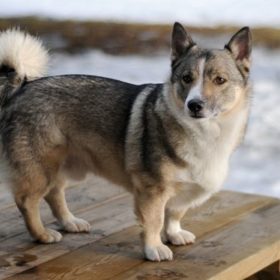 Swedish Vallhund
Swedish Vallhund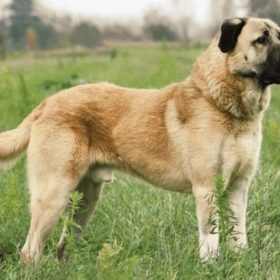 Kangal Shepherd Dog
Kangal Shepherd Dog Karst Shepherd
Karst Shepherd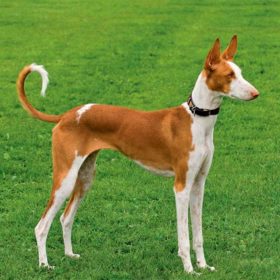 Podenco Canario
Podenco Canario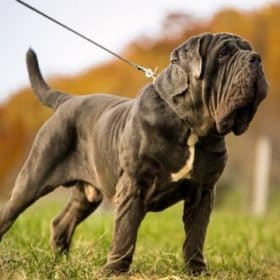 Neapolitan Mastiff
Neapolitan Mastiff Smaland Hound
Smaland Hound

